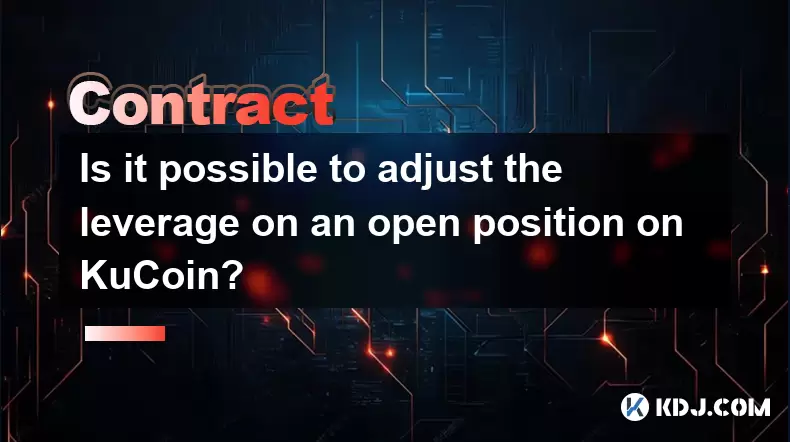-
 Bitcoin
Bitcoin $118800
-0.34% -
 Ethereum
Ethereum $4237
-0.62% -
 XRP
XRP $3.141
-1.79% -
 Tether USDt
Tether USDt $1.000
0.00% -
 BNB
BNB $808.8
0.01% -
 Solana
Solana $175.2
-3.73% -
 USDC
USDC $0.0000
0.01% -
 Dogecoin
Dogecoin $0.2238
-4.06% -
 TRON
TRON $0.3466
2.21% -
 Cardano
Cardano $0.7761
-3.07% -
 Hyperliquid
Hyperliquid $43.18
-4.79% -
 Chainlink
Chainlink $21.07
-3.83% -
 Stellar
Stellar $0.4347
-2.12% -
 Sui
Sui $3.686
-4.85% -
 Bitcoin Cash
Bitcoin Cash $581.5
1.78% -
 Hedera
Hedera $0.2488
-4.10% -
 Ethena USDe
Ethena USDe $1.001
-0.03% -
 Avalanche
Avalanche $22.89
-3.94% -
 Litecoin
Litecoin $120.0
-2.10% -
 Toncoin
Toncoin $3.394
1.58% -
 UNUS SED LEO
UNUS SED LEO $8.976
-1.54% -
 Shiba Inu
Shiba Inu $0.00001297
-4.26% -
 Uniswap
Uniswap $11.08
0.60% -
 Polkadot
Polkadot $3.873
-4.40% -
 Cronos
Cronos $0.1682
2.02% -
 Dai
Dai $1.000
0.00% -
 Ethena
Ethena $0.8056
-2.09% -
 Bitget Token
Bitget Token $4.413
-0.95% -
 Monero
Monero $264.4
-0.70% -
 Pepe
Pepe $0.00001122
-7.04%
What is the difference between currency-to-crypto leverage and contract trading?
Currency-to-crypto leverage directly amplifies the spot price of the asset, while contract trading utilizes derivatives that track the price, offering greater flexibility and potential profit opportunities.
Dec 16, 2024 at 12:08 pm

Understanding the Key Differences between Currency-to-Crypto Leverage and Contract Trading
In the ever-evolving world of cryptocurrency, traders and investors alike are constantly seeking ways to maximize their potential returns and manage risk. Two popular strategies that have gained significant traction are currency-to-crypto leverage and contract trading. While both involve leveraging funds to amplify gains, they differ in several fundamental aspects. This comprehensive analysis will delve into the intricacies of each strategy, highlighting their key differences to empower informed decision-making.
1. Currency-to-Crypto Leverage: An Introduction
Currency-to-crypto leverage allows traders to borrow funds from an exchange or brokerage to increase their buying power. It is typically expressed as a ratio, such as 2x, 5x, or 10x leverage. For instance, with 5x leverage, a trader can control $5,000 worth of cryptocurrency with an initial investment of only $1,000.
The primary advantage of currency-to-crypto leverage is its simplicity. Traders need only select the cryptocurrency they want to trade and the desired leverage amount. Furthermore, unlike contract trading, currency-to-crypto leverage does not require specialized knowledge or advanced trading strategies.
However, it is crucial to recognize the inherent risks associated with leverage. Amplifying one's buying power amplifies both potential profits and potential losses. If the market moves against the trader's position, the losses can quickly exceed the initial investment.
2. Contract Trading: A Deeper Dive
Contract trading, also known as futures trading, involves entering into an agreement to buy or sell a specific amount of cryptocurrency at a predetermined price on a future date. Unlike currency-to-crypto leverage, which directly affects the spot price of the underlying asset, contract trading utilizes derivatives that track the asset's price.
One key difference between currency-to-crypto leverage and contract trading lies in the settlement mechanism. Currency-to-crypto Leverage typically involves holding the underlying cryptocurrency, whereas contract trading may involve physical settlement or cash settlement. Physical settlement requires the delivery of the underlying asset, while cash settlement simply involves exchanging the cash equivalent value.
Contract trading offers several unique advantages. First, it provides traders with the ability to speculate on the price of an asset without directly owning it. This flexibility allows traders to take both long (buying) and short (selling) positions, enabling them to profit from both rising and falling markets.
Additionally, contract trading often provides greater liquidity than currency-to-crypto leverage, allowing traders to enter and exit positions quickly and efficiently. Many exchanges also offer a variety of contract types, such as perpetual futures and quarterly futures, catering to diverse trading strategies.
However, it is essential to emphasize that contract trading involves complex concepts and requires a thorough understanding of risk management techniques. Traders who lack familiarity with leverage and volatility should approach contract trading with caution.
3. Key Differences Summarized
- Leverage Type: Currency-to-crypto leverage directly amplifies the spot price of the underlying asset, while contract trading utilizes derivatives that track the price.
- Settlement Mechanism: Currency-to-crypto leverage generally involves direct ownership of the underlying asset, whereas contract trading may involve physical or cash settlement.
- Flexibility: Contract trading allows for both long and short positions, providing greater flexibility and potential profit opportunities.
- Liquidity: Contract trading often provides greater liquidity than currency-to-crypto leverage, facilitating quick and efficient order execution.
- Complexity: Contract trading requires a deeper understanding of risk management and advanced trading strategies, while currency-to-crypto leverage is relatively straightforward.
4. Choosing the Right Strategy
The choice between currency-to-crypto leverage and contract trading depends on individual risk tolerance, trading experience, and investment goals.
- Beginners: Currency-to-crypto leverage may be a more suitable starting point for novice traders due to its simplicity and reduced learning curve.
- Experienced Traders: Contract trading offers greater flexibility, profit potential, and risk management tools, making it more suitable for skilled traders seeking advanced strategies.
- Risk-Averse Investors: Currency-to-crypto leverage may be preferable for those seeking a less risky approach, while contract trading requires a high degree of caution due to its potential for significant losses.
- Scalability: Contract trading provides greater scalability, allowing traders to access larger amounts of capital and amplify their potential gains.
5. Risk Management Considerations
Irrespective of the strategy chosen, effective risk management is paramount in cryptocurrency trading.
- Understanding Leverage: Calculate the potential impact of losses if the market moves against your position and ensure it aligns with your financial capabilities.
- Position Sizing: Determine an appropriate position size based on your risk tolerance and account balance. Avoid overleveraging, which can lead to catastrophic financial consequences.
- Stop-Loss Orders: Place stop-loss orders to automatically close positions if the market reaches a predetermined level, mitigating potential losses.
- Trailing Stop-Loss Orders: Adjust stop-loss orders as the market moves in your favor to lock in profits and avoid reversals.
- Diversification: Spread your investments across different cryptocurrencies and trading strategies to reduce overall portfolio risk.
Disclaimer:info@kdj.com
The information provided is not trading advice. kdj.com does not assume any responsibility for any investments made based on the information provided in this article. Cryptocurrencies are highly volatile and it is highly recommended that you invest with caution after thorough research!
If you believe that the content used on this website infringes your copyright, please contact us immediately (info@kdj.com) and we will delete it promptly.
- Dogecoin's Wild Ride: Big Holders, Price Push, and What's Next for the Meme Coin
- 2025-08-12 08:30:12
- Bitcoin to $133,000? Here's What the Experts Are Saying
- 2025-08-12 08:30:12
- Dogecoin, Meme Coins, and Whale Buys: What's the Hype?
- 2025-08-12 06:50:12
- Bitcoin, Ethereum, and the Pump-and-Dump Merry-Go-Round: A New Yorker's Take
- 2025-08-12 07:10:12
- MAGACOIN Mania: Why Holders Are Staking Their Claim in This Bull Season
- 2025-08-12 06:30:13
- Heritage Distilling's Bold Bet: A $360M IP Treasury Powered by Story Protocol
- 2025-08-12 06:30:13
Related knowledge

Is it possible to adjust the leverage on an open position on KuCoin?
Aug 09,2025 at 08:21pm
Understanding Leverage in KuCoin Futures TradingLeverage in KuCoin Futures allows traders to amplify their exposure to price movements by borrowing fu...

What cryptocurrencies are supported as collateral on KuCoin Futures?
Aug 11,2025 at 04:21am
Overview of KuCoin Futures and Collateral MechanismKuCoin Futures is a derivatives trading platform that allows users to trade perpetual and delivery ...

What is the difference between realized and unrealized PNL on KuCoin?
Aug 09,2025 at 01:49am
Understanding Realized and Unrealized PNL on KuCoinWhen trading on KuCoin, especially in futures and perpetual contracts, understanding the distinctio...

How does KuCoin Futures compare against Binance Futures in terms of features?
Aug 09,2025 at 03:22am
Trading Interface and User ExperienceThe trading interface is a critical component when comparing KuCoin Futures and Binance Futures, as it directly i...

How do funding fees on KuCoin Futures affect my overall profit?
Aug 09,2025 at 08:22am
Understanding Funding Fees on KuCoin FuturesFunding fees on KuCoin Futures are periodic payments exchanged between long and short position holders to ...

What is the distinction between mark price and last price on KuCoin?
Aug 08,2025 at 01:58pm
Understanding the Basics of Price in Cryptocurrency TradingIn cryptocurrency exchanges like KuCoin, two key price indicators frequently appear on trad...

Is it possible to adjust the leverage on an open position on KuCoin?
Aug 09,2025 at 08:21pm
Understanding Leverage in KuCoin Futures TradingLeverage in KuCoin Futures allows traders to amplify their exposure to price movements by borrowing fu...

What cryptocurrencies are supported as collateral on KuCoin Futures?
Aug 11,2025 at 04:21am
Overview of KuCoin Futures and Collateral MechanismKuCoin Futures is a derivatives trading platform that allows users to trade perpetual and delivery ...

What is the difference between realized and unrealized PNL on KuCoin?
Aug 09,2025 at 01:49am
Understanding Realized and Unrealized PNL on KuCoinWhen trading on KuCoin, especially in futures and perpetual contracts, understanding the distinctio...

How does KuCoin Futures compare against Binance Futures in terms of features?
Aug 09,2025 at 03:22am
Trading Interface and User ExperienceThe trading interface is a critical component when comparing KuCoin Futures and Binance Futures, as it directly i...

How do funding fees on KuCoin Futures affect my overall profit?
Aug 09,2025 at 08:22am
Understanding Funding Fees on KuCoin FuturesFunding fees on KuCoin Futures are periodic payments exchanged between long and short position holders to ...

What is the distinction between mark price and last price on KuCoin?
Aug 08,2025 at 01:58pm
Understanding the Basics of Price in Cryptocurrency TradingIn cryptocurrency exchanges like KuCoin, two key price indicators frequently appear on trad...
See all articles

























































































